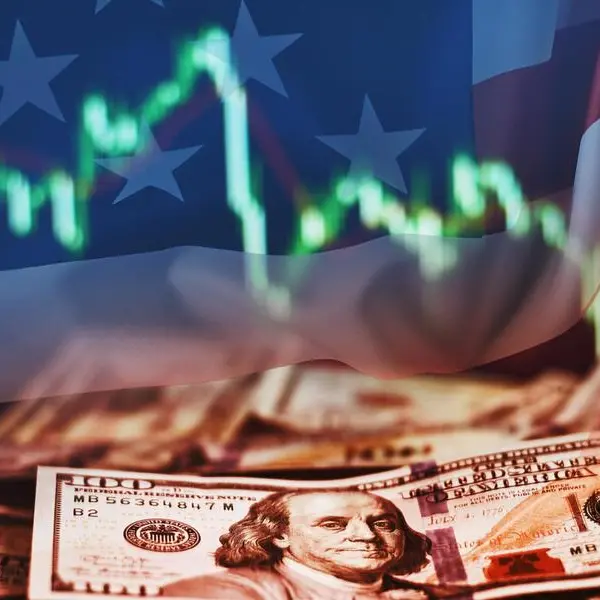PHOTO
WASHINGTON - U.S. worker productivity gains running well above the long-term average may help buttress the Federal Reserve's faith that inflation is contained and further open the door to interest rate cuts policymakers anticipate will start in coming months.
Output per worker, a key gauge of how fast the economy can grow without rising inflation, increased 3.2% in the last quarter of 2023, the third quarter of productivity gains above 3% in a series that averaged about 1% from 2010 through 2019.
Fed Chair Jerome Powell spoke at his Wednesday press conference about the advantages rising productivity holds for the Fed's inflation fight, offering the prospect of more jobs and stronger economic growth with less pressure on prices. But while the productivity numbers may be more an explanation of why inflation has been falling as opposed to a signal about what comes next, Powell no longer says the economy needs to go through a period of sluggish, below-potential growth for the pace of price increases to decline from a level still described by the Fed as "elevated."
The need for weak growth to cool inflation had been a working premise of Fed policy for much of its fight against rising prices. Its disappearance from Powell's rhetoric points to some faith that output per worker will remain healthy, and unit-labor costs will stay muted. Beyond lowering inflation pressures, rising productivity leaves more room for wage gains since each worker hour is providing more goods and services.
"Whereas a year ago we were thinking that we needed to see some softening in economic activity that hasn't been the case...We don't look at it as a problem," Powell said. "I think at this point, we want to see strong growth, we want to see a strong labor market. We're not looking for a weaker labor market. We're looking for inflation to continue to come down as it has been coming down for the last six months."
'ELEVATED' FOR HOW LONG?
The Fed at its meeting this week finished a policy evolution that began last year, removing a presumption of further rate hikes in favor of a neutral stance and an acknowledgment that rates could fall once policymakers gain more confidence inflation will continue declining towards the Fed's 2% target.
Investors expect a first rate cut in May, but on the way there policymakers will have to make a judgment - and likely reflect it in public comments - that the pace of inflation is no longer elevated.
That may just be a matter of time. While the Personal Consumption Expenditures price index used by the Fed to set its target was last at 2.6% on a yearly basis, the eight-month pace since April annualizes to a below-target 1.9%.
Powell on Wednesday said he did not think there will be enough data in hand by the March 19-20 meeting to reduce rates. But by the April 30-May 1 meeting policymakers will have received a full suite of first-quarter data on consumer inflation, PCE, jobs, wages, and an estimate of economic growth for the first quarter of the year.
All will be watched as policymakers consider when to finally remove the word "elevated" from the description of inflation in their policy statement.
Also important are survey and market measures of inflation expectations, something policymakers feel need to remain consistent with the 2% target for them to trust that inflation will "settle" there, not just "tap" it, as Powell said.
While currently at 2.9%, the most recent University of Michigan survey of household inflation expectations for the next year is within the range seen before the pandemic, and Fed officials consider them largely consistent with their target. Officials also see market measures of inflation, such as the breakeven rates on Treasury Inflation Protected Securities, as well "anchored."
ACHIEVING 'GREATER CONFIDENCE'
Other data on the job market, like measures of layoffs, quit rates, and labor turnover, are near where they were before the pandemic.
"The labor market by many measures is at or nearing normal," Powell said, though wages were still "not quite back to where they would need to be in the longer run."
New hourly wage data for January will be released on Friday.
But after Powell noted how much recent disinflation hinged on actual declines in the prices of some goods, meaning future headline inflation could rise even if goods prices simply stay stable, analysts pointed to two longstanding inflation concerns as key to Fed confidence-building: housing and services.
Declines in housing inflation should be almost mechanical in coming months as easing market rents make their way into the inflation indexes. Services price increases may prove stickier and be the final hurdle to clear for officials to describe inflation as something other than elevated.
Wage growth still above a level Fed officials see compatible with 2% inflation could also come into play.
"There may be enough voices on the (Federal Open Market) Committee that remain concerned about services inflation - and shelter inflation in particular - and wage growth to keep the Fed on hold for longer," Bank of America analysts wrote. "We think achieving 'greater confidence' requires more evidence that services inflation is consistent with 2% outcomes in the event that goods price declines stop, and a further slowing in wage growth to 3.5%."
(Reporting by Howard Schneider; Editing by Dan Burns and Andrea Ricci)























